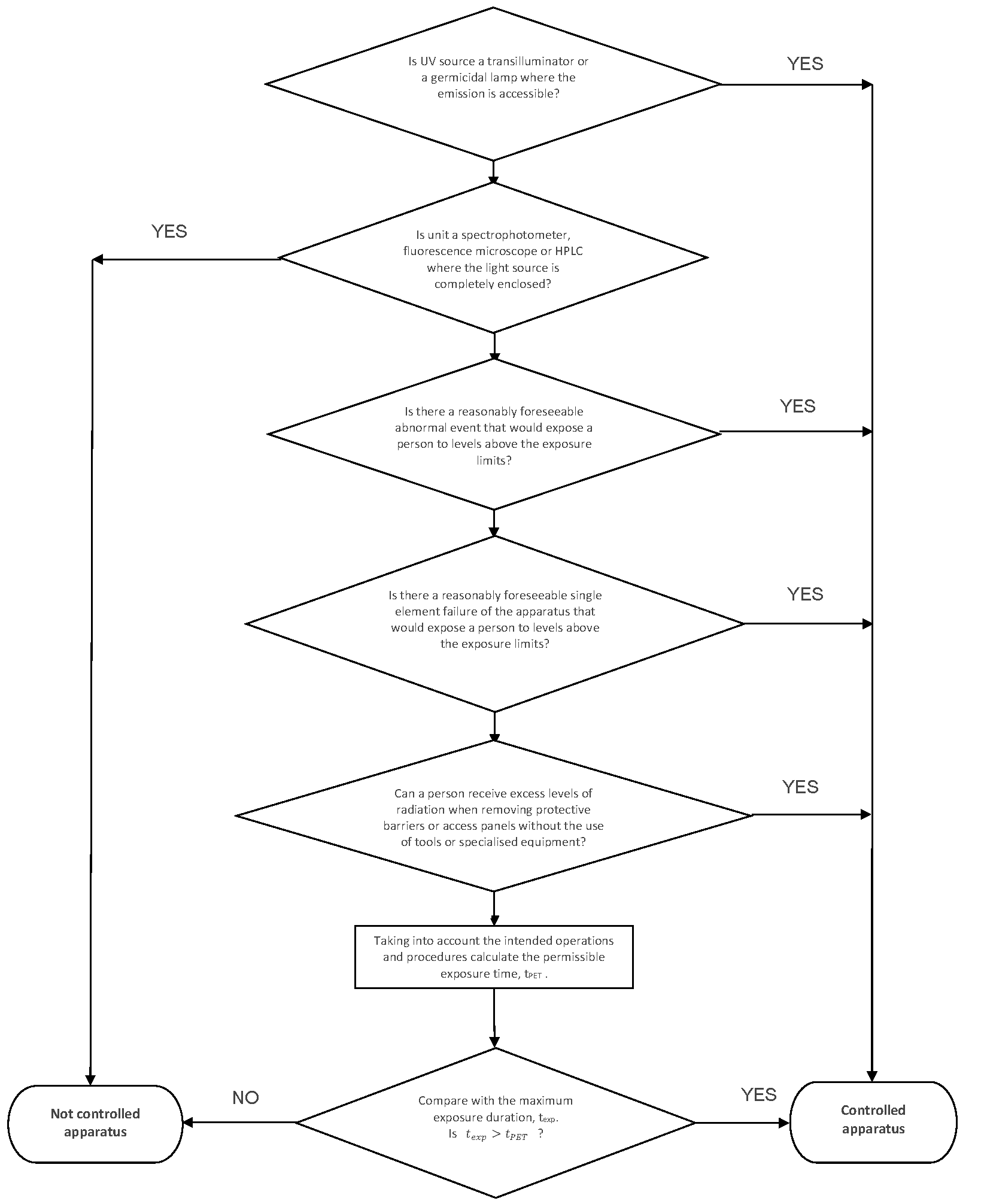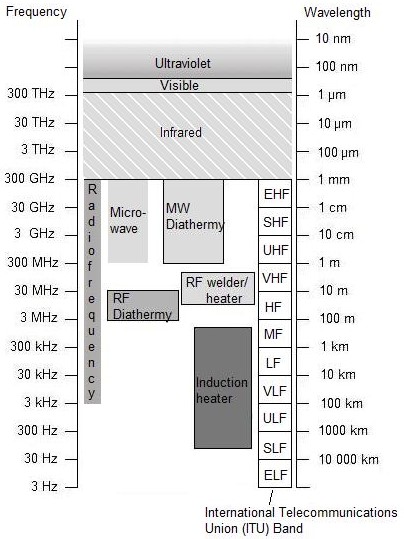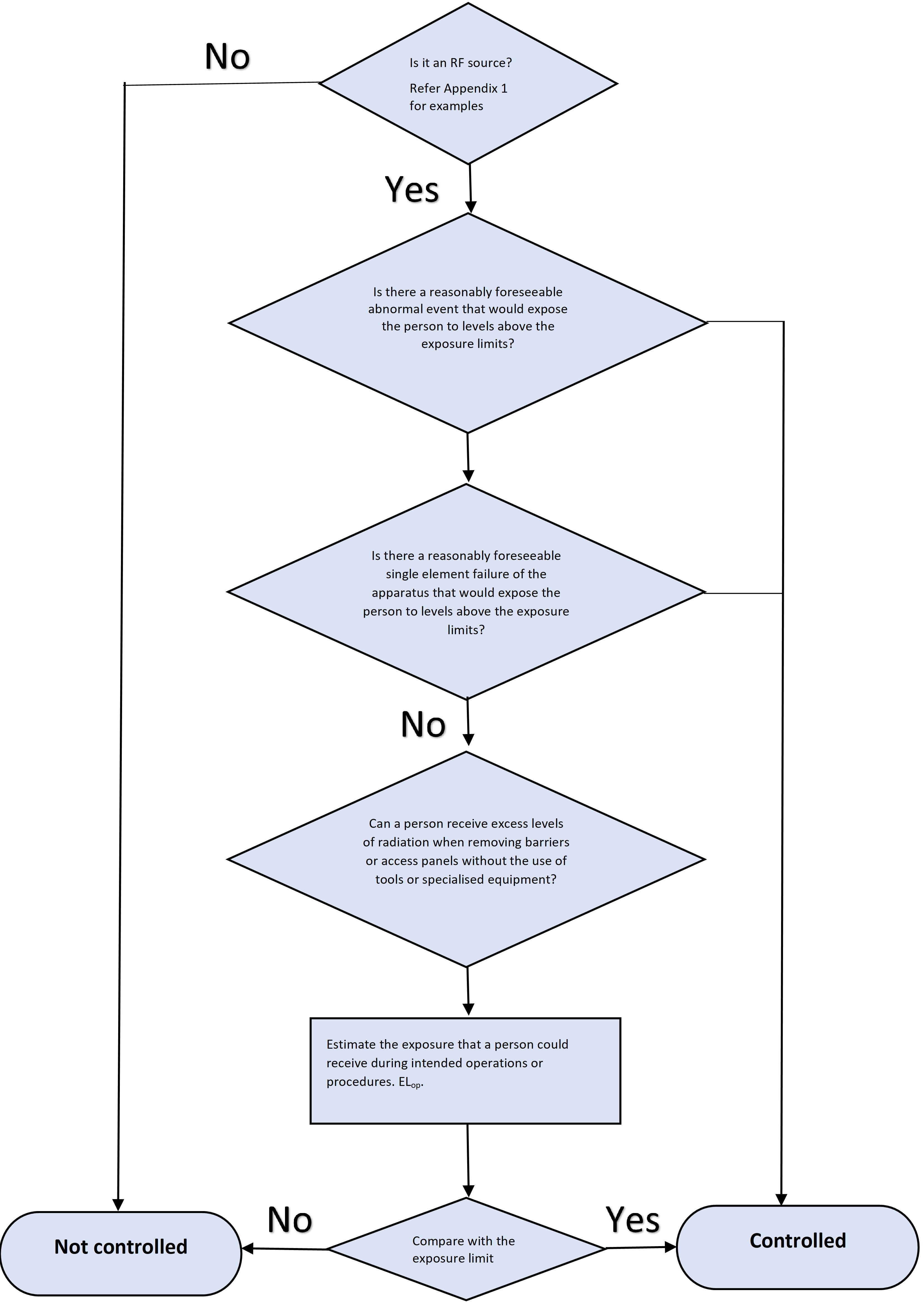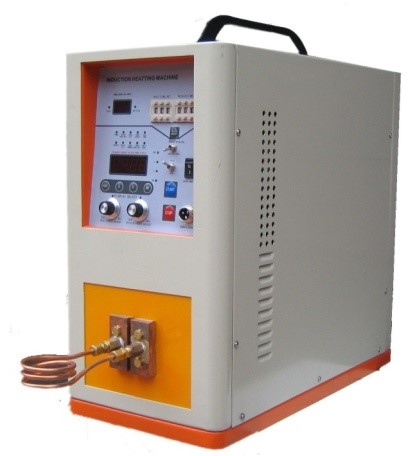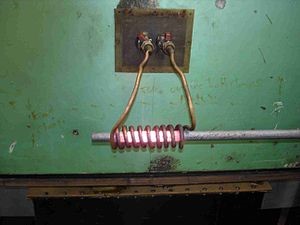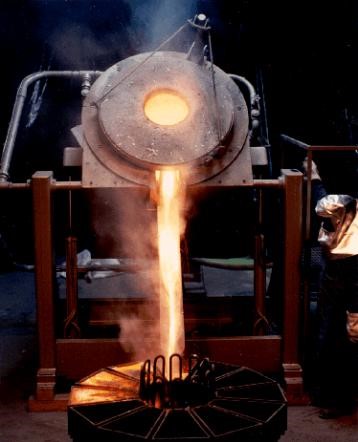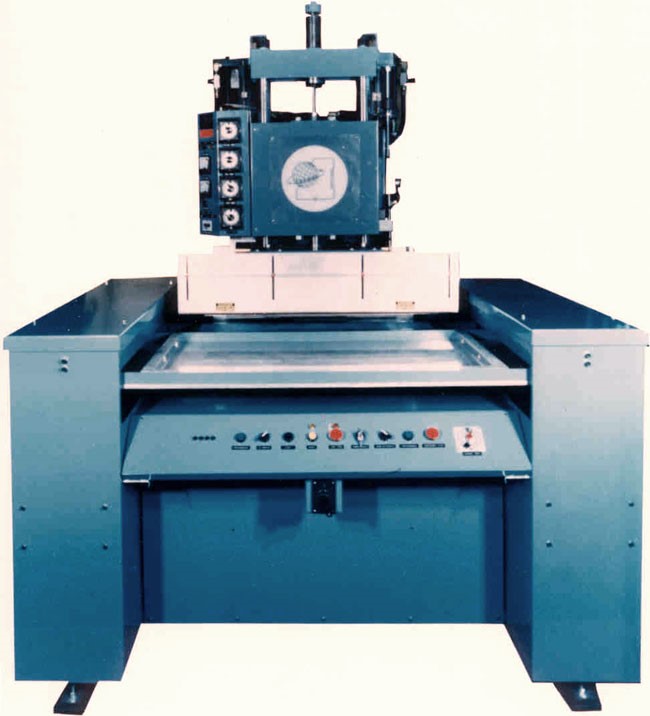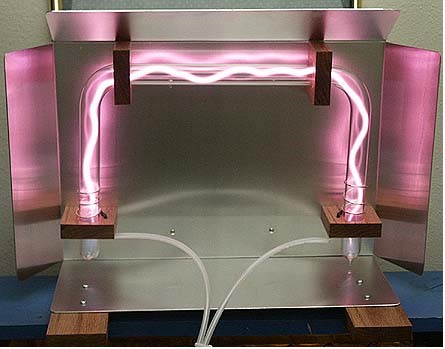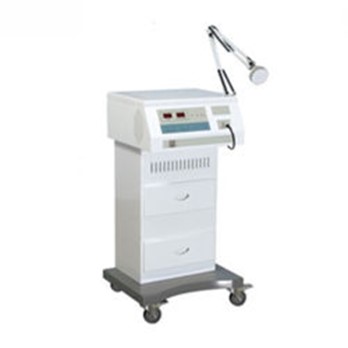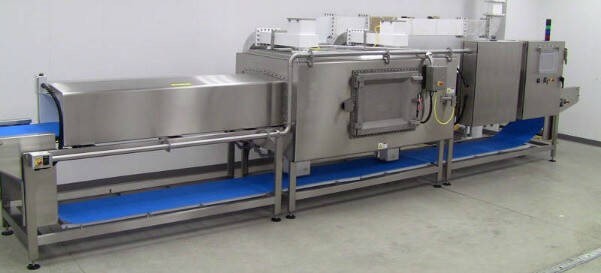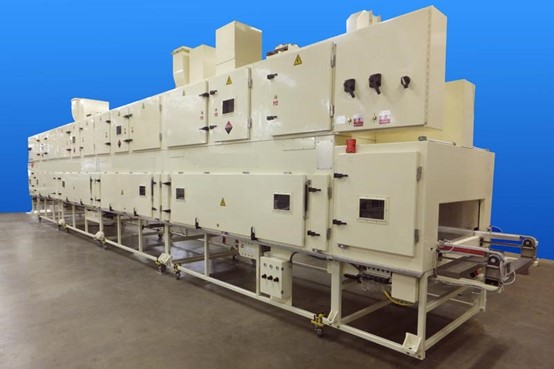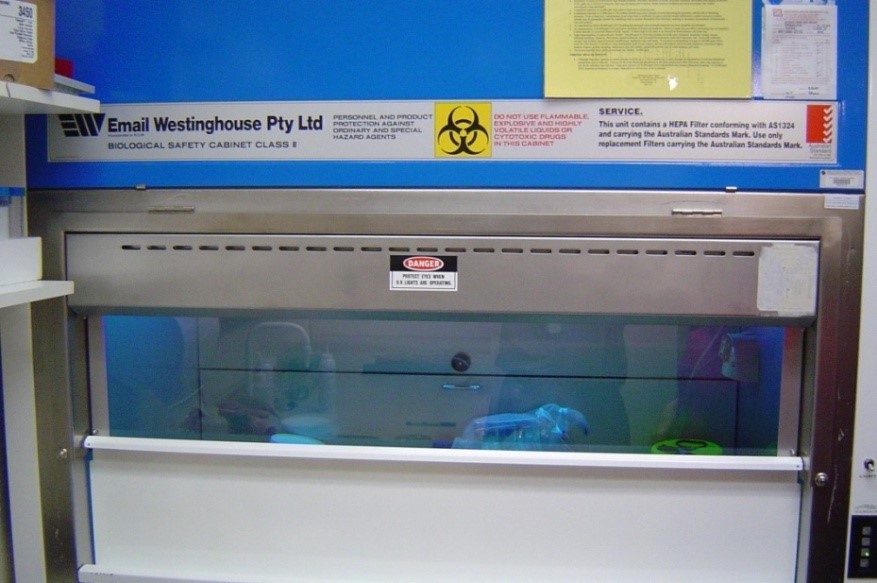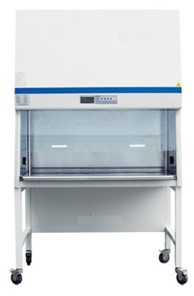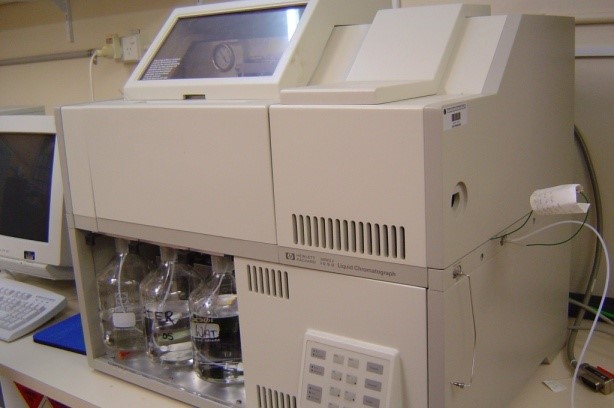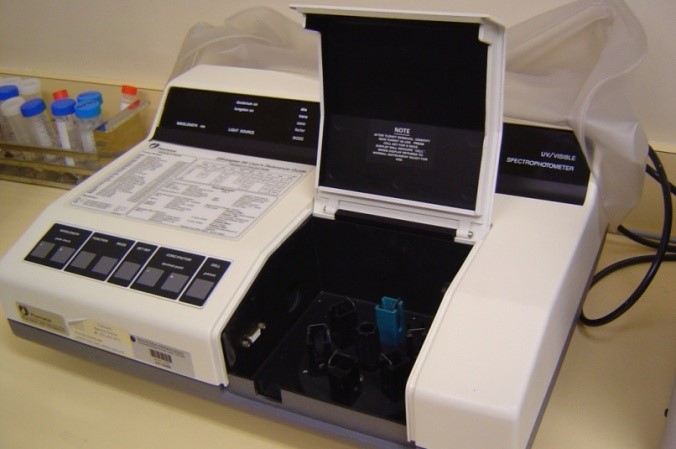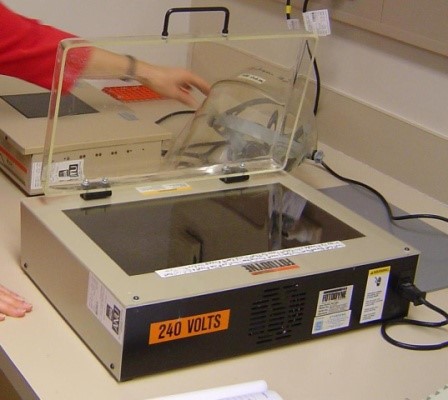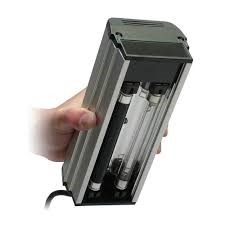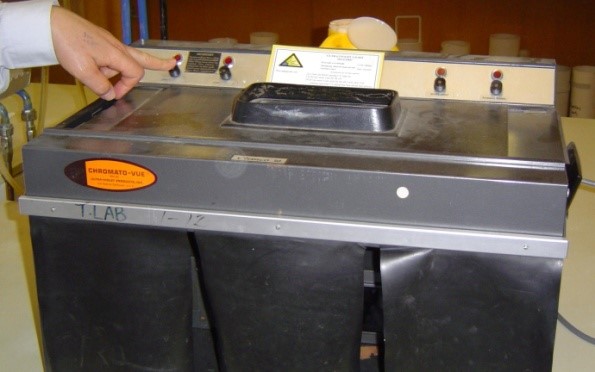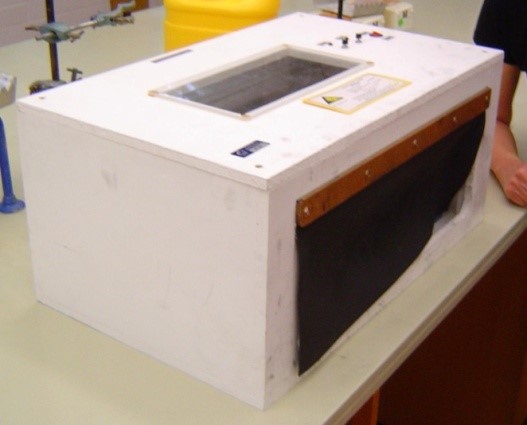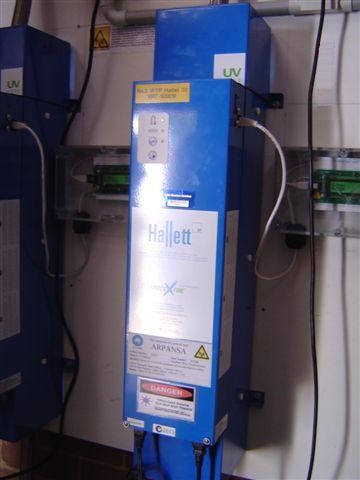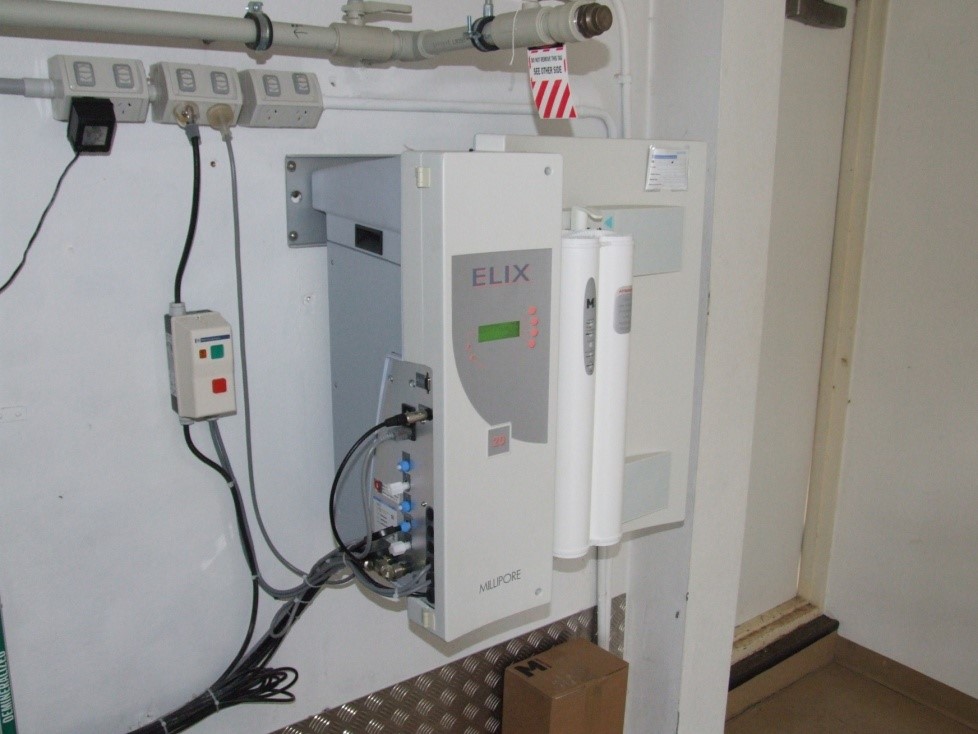ARPANSA’s expectations for how a licence holder or applicant will manage the safety and security of facilities and sources
Introduction
This guide sets out ARPANSA’s expectations for how a licence holder or applicant will manage the safety and security of facilities and sources.
Under the Australian Radiation Protection and Nuclear Safety Act 1998 (the Act) and Australian Radiation Protection and Nuclear Safety Regulations 2018 (the Regulations), licence holders must develop and follow their own plans and arrangements to manage safety. This requirement is consistent with Principle 1 of the International Atomic Energy Agency’s Fundamental Safety Principles SF-1 which states that ‘the prime responsibility for safety is with the person or organisation responsible for facilities and activities that give rise to radiation risks.’
Sections 46 and 47 of the Regulations set out the information that is required in a licence application; this includes plans and arrangements that describe how the applicant proposes to manage the safety of the facility or source. Further information that the CEO may request will vary depending on the type of application but may also include siting, design or construction plans, operating limits and conditions, preliminary or final safety analysis report, source identification and location details, etc.
The CEO must be satisfied that the information provided demonstrates that the proposed conduct (for a facility) or proposed dealing (for a source) can be carried out without undue risk to
the health and safety of people and the environment. For facilities, this information will be collated in a safety case. The safety case is the collection of scientific, technical, administrative and managerial arguments and evidence in support of the safety of a facility, covering the suitability of the site and the design, construction and operation; the assessment of radiation risks and assurance of the adequacy and quality of all of the safety related work that is associated with the facility.
A major component of the safety case is the safety assessment, which includes the safety analysis. Important elements of the safety assessment are radiological impact on humans and the environment, site and engineering aspects, operational safety, non-radiological impacts and the management system. The safety analysis is the evaluation of the potential hazards associated with a facility or activity, documented in a safety analysis report (SAR). The safety case with its supporting safety assessment provides the basis for demonstrating safety for licensing purposes.
The arrangements in place to establish and manage a facility or activity, and the interdependencies between such arrangements, should be documented in a management system. A management system designed to support the object of the Act will integrate safety, health, environmental, security, quality, societal and economic elements.
The management system should foster and promote a culture for safety and security, which takes into account human factors such as attitudes and behaviour, as well as the general mindset by which all workers, including senior management, approach safety. These factors should interact with the technological and organisational factors in a way that promotes holistic safety (often referred to as systems safety), which is considered a best practice approach to safety management. A holistic approach to safety ensures the technology is safe to use; people perform tasks safely at work; and the organisation overall is managed safely.
Once a licence is issued and an applicant becomes a licence holder, section 60 of the Regulations requires the licence holder to comply with their plans and arrangements. Changes to plans and arrangements that will have significant implications for safety can only be made after the licence holder has sought and obtained approval from the CEO of ARPANSA under section 63 of the Regulations. Changes unlikely to have significant implications for safety do not need prior approval but must be reported to the CEO within three months under section 64 of the Regulations. Under section 61 of the Regulations, the licence holder must, at least every three years, review their plans and arrangements and keep and maintain records of the review and any changes.
Scope and Purpose
This Guide is applicable to both sources and facilities. Its purpose is to outline those key aspects that should comprise an organisation’s plans and arrangements for managing safety. It should be applied to the extent practicable and commensurate with the degree of hazard associated with the conduct or dealing. For example, the plans and arrangements for a complex facility will be different to those for a low hazard source. A graded approach is important to ensure that efforts and resources are directed to the matters that are most significant for protection of health and safety of people and the environment.
This Guide may be useful to applicants or licence holders to draft, modify or review some or all of their plans and arrangements.
ARPANSA will take this Guide into consideration when:
- assessing an applicant’s plans and arrangements when submitted as part of a licence application.
- assessing and monitoring licence holders’ compliance with the requirement to update any plans and arrangements for managing controlled facilities, controlled material or controlled apparatus under section 61 of the Regulations.
- assessing requests for approval to make a change with significant implications for safety under section 63 of the Regulations.
- overseeing general compliance through inspections, site visits, meetings, etc.
ARPANSA has drawn on international best practice to prepare this Guide. Where appropriate, links to trusted international standards and additional guidance are provided; applicants are expected to take these into account when developing and reviewing their plans and arrangements.
Structure
This Guide has eight chapters, based on sections 46 & 47 of the Regulations. Links to additional ARPANSA guidance and international standards are provided at the end of each chapter.
- Effective Control
- Safety Management
- Radiation Protection
- Radioactive Waste
- Ultimate Disposal or Transfer (for source licences only)
- Security
- Emergency
- Environment Protection
1. Effective Control
Statutory and regulatory compliance
Statutory and regulatory compliance underpin all operations.
Plans and arrangements should demonstrate:
1.1 The processes or systems that will allow all relevant and applicable statutory and regulatory requirements to be identified.
1.2 How important statutory and regulatory compliance aspects will be shared and communicated to relevant personnel.
1.3 How all operations and functions will be in compliance with the identified requirements.
1.4 How the licence holder will ensure it stays up-to-date with applicable regulatory requirements.
Management commitment
Management is committed to maintaining safe and secure operations and work environment.
Plans and arrangements should demonstrate:
1.5 Management’s support, promotion and endorsement of the plans and arrangements and their use throughout the organisation1.
1.6 Management’s commitment to:
- ensuring compliance with statutory and regulatory obligations
- allocating adequate resources to safety and security
- maintaining control over the source or facility
1.7 Management’s commitment to the principles of holistic safety:
- human aspects and human performance
- organisational aspects including safety culture and organisational learning
-
- technological aspects
- interactions between technical, human and organisational factors in the management of safety
1.8 How management’s commitment to the aforementioned will be clearly understood by all staff and promulgated across the organisation.
Accountabilities and responsibilities
Accountabilities and responsibilities are identified for all key functions and operations.
Plans and arrangements should demonstrate:
1.9 Accountabilities and responsibilities, including delegations, are clearly defined and described for:
- the overall management of the plans and arrangements are clearly defined2
- all conducts, dealings and operations and maintaining control over the source or facility
- safety and security
- statutory and regulatory compliance
- resources
- process implementation
1.10 Accountabilities and responsibilities are mapped out clearly for each section, branch and division.3
1.11 Systems are in place to ensure staff are fully aware of their own accountabilities and responsibilities and also those of other staff.
Resources
Resources are adequately allocated and controlled.
Plans and arrangements should demonstrate:
1.12 The systems in place to identify resource requirements.
1.13 How the organisation’s resources will be controlled.
1.14 How radiation protection and nuclear safety will be considered in allocation of resources.
1.15 The systems used to track and monitor resources.
1.16 The systems used to review resource allocations if circumstances change to ensure continued safety and security of operations.
Communication
Information is effectively communicated throughout the organisation.
Plans and arrangements should demonstrate:
1.17 Communication needs and requirements have been identified.
1.18 How communication processes and infrastructure will be maintained or put in place to address this need.
1.19 What modes of communication all staff, including contractors, are expected to use4.
1.20 How all staff, including contractors, is able to communicate information with radiation protection and nuclear safety implications efficiently and effectively.
Process implementation
Operations, processes, functions and activities are adequately controlled.
Plans and arrangements should demonstrate:
1.21 There is a consistent method or approach to develop, approve and roll-out new processes and operations, or review existing ones.
1.22 The systems that will be used to encourage all staff, including contractors, to follow and adopt this method or approach.
1.23 How staff and stakeholder consultation will be included or involved in process development and implementation.
1.24 How process implementation will be monitored and controlled.
Documentation and document control
Documentation is organised and effectively managed.
Plans and arrangements should demonstrate:
1.25 All processes, both administrative and practical, with implications for safety or security, is carried out in accordance with written procedures.
1.26 All conducts, dealings and operations with implications for radiation protection and nuclear safety are adequately documented and periodically reviewed.
1.27 There are criteria, methods or manuals outlining what specific processes and operations need to be documented5.
1.28 There are systems in place to ensure documents are integrated and consistent with one another6.
1.29 The systems used to ensure documents are quickly and easily accessible staff (including contractors) who need them.
1.30 Documents are managed in an appropriate quality system (preferably accredited).
Footnotes to Chapter 1
1 For example, this could be demonstrated by the CEO signing them.
2 For example, this should be someone who has ultimate responsibility for the plans and arrangements.
3 For example, this could be an organisational chart showing the organisational structure.
4 It should be noted that these modes may vary depending on safety and security needs.
5 For example, which operations require procedures, instructions, workflows, SOPs.
6 For example, methods clearly link to overarching organisational policies (vertically) and methods which describe operations integrate with one another (horizontally). Having a method, proforma or ‘document manual’ would help with this process, as is commonly applied by other organisations.
For IBP relevant to effective control see: International best practice | ARPANSA particularly GSR Part 2 Leadership and Management for Safety and other IAEA publications.
2. Safety Management
Safety policy and objectives
Overarching policies and objectives for safety are clearly defined.
Plans and arrangements should demonstrate:
2.1 An adequate overarching safety policy exists related to all functions, operations, conducts and dealings.
2.2 Safety objectives are clearly outlined7.
2.3 How all staff will be encouraged to fully adopt the safety policy and objectives and how the CEO (or management equivalent) will endorse their use.
2.4 The systems to ensure the safety policy and objectives will be communicated and understood by all staff8.
2.5 The systems to ensure the policy will be monitored, reviewed and kept up-to-date.
Monitoring and Measurement
Operations are tracked, monitored and measured.
Plans and arrangements should demonstrate:
2.6 Processes used to collect safety data, including from incidents, accidents, exceedances, events, tests, walk-downs, assessments, observations, reports, audits, comments and suggestions.
2.7 Processes in place to observe, assess and promote a good safety culture.
2.8 The systems, processes or infrastructure that is used to report and communicate safety data.
2.9 What type of safety data that will be collected i.e. reactive and predictive data.
2.10 Clear systems or processes used to encourage reporting and communication of data.
2.11 How this data and other safety related data will be securely collected, stored and analysed (see Risk Assessment and Mitigation below regarding analysis of data).
2.12 How differences between how things are done versus how they are described will be identified9.
2.13 How hazards throughout all operations, conducts and dealings will be identified.
Risk assessment and mitigation
Risks are reduced to acceptable levels by applying risk assessment and mitigation strategies.
Plans and arrangements should demonstrate:
2.14 The process by which safety and security data collected from monitoring and measurement is assessed.
2.15 This assessment process enables safety and security data to be filtered and assessed according to the risk.
2.16 The systems to ensure staff designated to conduct this risk assessment have appropriate experience, knowledge and competence.
2.17 There is a threshold or criteria that determine when deviations from an expected outcome are investigated.
2.18 How investigations will take place and how they will be conducted. This should include investigations of breaches required under section 57 of the Regulations.
2.19 Methods are clearly outlined for conducting investigations and how personnel with sufficient knowledge, experience and competence will be involved.
2.20 Processes are in place to develop control measures for risks that warrant mitigation.
2.21 Implementation of risk mitigation measures according to change control and process implementation guidelines and procedures (see 'Managing Change' below and also Process Implementation under Effective Control).
Managing change
Changes are safely managed.
Plans and arrangements should demonstrate:
2.22 A formal change management policy and process is in place.
2.23 How the need and objective for change will be identified or established.
2.24 The systems or processes used to develop options to meet this change objective.
2.25 How each option’s safety benefits, detriments and risks will be evaluated and compared.
2.26 How the preferred option(s) will be identified.
2.27 How plans to effectively implement the preferred option(s) are developed and how these plans are consistent with process implementation guidelines or instructions.
2.28 The systems or processes to ensure that the implemented change will be controlled and monitored so that safety is maintained and not degraded.
2.29 How the whole change process will be reviewed to ensure the change has been effective in meeting its radiation protection and nuclear safety objectives.
Learning and continuous improvement
Learning from experience and continuous improvement underpin all operations.
Plans and arrangements should demonstrate:
2.30 A policy or procedures are in place to ensure learning and continuous improvement occurs for all operations (including security and emergency preparedness and response).
2.31 The systems, processes or performance criteria used to determine when operations or functions are reviewed for the purpose of learning and continuous improvement.
2.32 How the review will take place and who will be involved.
2.33 The systems or processes that will allow the learning processes to be identified and shared across the organisation, where applicable10.
2.34 How improvements identified through the above processes will be implemented in a controlled manner.
2.35 How audit processes will be in place to ensure these improvement are actually being implemented on the shop floor, resulting in continuous improvement.
Training and education
Staff are provided with appropriate safety training and education programs.
Plans and arrangements should demonstrate:
2.36 The systems or processes used to identify and determine the competency requirements for operations with safety implications.
2.37 How safety training needs for staff (and their respective role and job functions) will be identified to maintain and meet these competency requirements. Training programs should be informed by performance assessment and should be periodically reviewed for effectiveness.
2.38 An adequate plan, program or method exists to ensure these training requirements continue to be met, such as succession-planning or refresher training.
2.39 There is a systematic process for developing, approving and reviewing training to ensure it is effective and continues to meet operational needs.
2.40 The systems or processes used ensure the content and delivery of the training involves stakeholder consultation, takes into account adult learning styles and other relevant factors so that the training is effective.
2.41 How training records for all staff will be controlled, monitored and kept up-to-date.
Footnotes to Chapter 2
7 These are the aims the organisation has with respect to safety.
8 An example could be that this is prominently displayed to staff.
9 This is equivalent to work as done versus work as imagined. It is important to evaluate this because it helps identify drift in operations i.e. both local and organisational operations and functions.
10 For example, this could include learning from deviations or any other functioning which the organisation can learn from for the purpose of improving operational safety and security.
Additional ARPANSA guidance:
|
|
For IBP relevant to safety management see:
|
|
3. Radiation Protection
Principles of radiological protection
The fundamental principles of optimisation, justification, limitation are taken into account.
Plans and arrangements should demonstrate:
3.1 Conducts and dealings are justified, that is, they must produce a net benefit to the exposed individual or the community, taking into account social, economic and other relevant factors.
3.2 The normal exposure of individuals must be limited so that neither the total effective dose nor the total equivalent dose to relevant organs or tissues, caused by the possible combination of exposures from conducts and dealings, exceeds any relevant dose limit specified in the Regulations.
3.3 For any conduct or dealing under the licence holder or applicant’s control, protection and safety must be optimised so that the magnitude of individual doses, the number of people exposed and the likelihood of incurring exposures are kept as low as reasonably achievable (ALARA), taking into account economic and social factors. For each radiation source, the level of radiation protection provided is optimised so that both individual and collective (normal and potential) exposures are kept ALARA.
3.4 The optimisation of the protection and safety measures associated with any particular conduct or dealing must be subject to dose constraints, the value of which is agreed by ARPANSA. Selection of dose constraints should be based on international best practice.
3.5 Provisions for appropriate reference levels11 above which some specific actions or decisions are taken. The reference levels may include recording levels, investigation levels, action levels, and intervention levels (see also Section 7: Emergency).
3.6 The consideration of wildlife (plants and animals) in their natural habitats. Protection should be subject to a screening dose rate for wildlife of 10 µGy/h for a conservative assessment. If this is exceeded, species-specific optimisation is required based on observed effects data in the form of Environmental Reference Levels (see Section 8: Environment Protection Plan).
3.7 Exposure to non-ionising radiation is kept below relevant exposure limits and to the lowest level that can be achieved, consistent with best practice.
Radiation safety officer
A suitably qualified radiation safety officer (RSO) is appointed as appropriate, to undertake specific duties in relation to radiation protection and nuclear safety.
Plans and arrangements should demonstrate:
3.8 A RSO has been appointed if:
- The annual doses have the potential to exceed 10% of the limits prescribed in the Regulations
- The conduct involves a controlled facility
- The dealing involves Group 2, Group 3 or hazardous non-ionising radiation sources (eg Class 4 lasers)
3.9 The RSO has operational duties that are clearly specified in the radiation protection plan.
3.10 The RSO has sufficient knowledge of the Act and Regulations, relevant codes of practice, such as the ARPANSA Radiation Protection Series, Radiation Health Series, relevant Australian Standards and other guidance material and information relevant to the duties of the RSO, to facilitate the achievement of best practice for the conduct or dealing being undertaken.
Radiation safety committee
A suitably qualified radiation safety committee (RSC) is appointed as appropriate, to undertake specific duties in relation to radiation protection and nuclear safety.
Plans and arrangements should demonstrate:
3.11 A RSC has been established if any of the following are met:
- The conduct or dealing has multiple activities involving controlled facilities, controlled apparatus and controlled material, or is spread over a number of premises.
- The annual doses of ionising radiation from any conduct or dealing at any of the premises has the potential to exceed 10% of the limits specified in the Regulations.
- There is potential exposure to non-ionising radiation above the limits specified in Schedule 1 of the Regulations.
3.12 The RSC has functions that are clearly specified in the radiation protection plan.
3.13 The RSC acts as an administrative and consultative body that reviews the radiation protection plans and policies for all conducts and dealings within the organisation and recommends to the licence holder or applicant the radiation protection policy that should be implemented.
3.14 The RSC is of size and membership determined by the type and size of the organisation using controlled facilities, controlled apparatus and controlled material.
3.15 The RSC meets at regular intervals (eg. quarterly) and hold special meetings to review important safety issues as required.
3.16 The RSC deputises persons for the Chair, the Secretary/Executive Officer and the RSO if any of them is unable to attend a meeting.
3.17 The RSC has standing orders relating to a quorum of members which would normally consist of at least one half of the committee membership including the Chair (or their deputy) and the RSO (or their deputy).
3.18 The RSC has a standard agenda item for the RSO to present a report on the state of radiation protection in the organisation.
3.19 The RSC keeps minutes of the RSC meetings that should be ratified at following meetings of the RSC.
3.20 The RSC forwards a copy of the RSC minutes to the senior management of the organisation.
3.21 The RSC establishes and maintains a channel of communication with the work health and safety committee of the organisation (if one exists).
3.22 The RSC undertakes consultation with controlled person and visitors who may be exposed to radiation in their work, and with controlled persons’ representatives, where appropriate.
Planning and design of the workplace
Design of the workplace is optimised for radiation protection consistent with international best practice12
Plans and arrangements should demonstrate:
3.23 The planning, design and construction of the workplace where conducts and dealings are undertaken is in compliance with trusted international standards.
3.24 The workplace has been planned and designed to ensure that:
- Doses, including effective dose and equivalent dose, are in compliance with prescribed dose limits and are as low as reasonably achievable (ALARA), economic and social factors being taken into account, and that appropriate dose constraints have been used.
- For each radiation source, the level of radiation protection provided is optimised so that both individual and collective (normal and potential) exposures are kept ALARA.
- Exposure to ionising radiation is in compliance with a source related dose constraint of 10% of the effective dose limits specified in the Regulations (or another percentage agreed with the CEO).
- Exposure to non-ionising radiation is kept below relevant exposure limits to the lowest level that can be achieved.
3.25 Priority is given to engineering controls (including ventilation, interlocks and shielding) to minimise reliance on administrative controls and personal protective equipment.
Classification of work areas
Work areas are classified in accordance with ARPANS legislation and trusted international standards.
Plans and arrangements should demonstrate:
3.26 Areas are classified as controlled areas wherever:
- There exists a potential for significant internal or external exposure from radiation or contamination.
- It is required to control normal exposures or prevent the spread of contamination during normal working conditions.
- Measures are required to prevent or limit the extent of potential exposures.
3.27 Controlled areas are delineated by physical means or, where this is not reasonably practicable, by some other suitable means.
3.28 Suitable warning symbols and appropriate instructions are displayed at access points and other appropriate locations within controlled areas.
3.29 Appropriate occupational protection and safety measures are established for each controlled area, including the provision of local rules and procedures.
3.30 The following items are provided, as appropriate, at exits from controlled areas:
- equipment for monitoring for contamination of skin and clothing
- equipment for monitoring for contamination of any object or substance being removed from the area
- washing or showering facilities
- suitable storage for contaminated protective clothing and equipment
3.31 Supervised areas should be:
- delineated by appropriate means
- indicated by approved signs at appropriate access points
- reviewed periodically to determine any need for protective measures and safety provisions, or changes to the boundaries
Local rules and procedures
Local rules and procedures are implemented for protection and safety of workers and other persons.
Plans and arrangements should demonstrate:
3.32 Implementation of local rules and procedures that describe:
- Person responsible for radiation safety, and emergency arrangements in the event of an accident and/or incident
- Accountability of sources
- Managing criticality safety as applicable
- Decontamination
- Calibration and maintenance of equipment
- Investigation level or authorised level, and measures to be followed in the event that any such level is exceeded
Personal protective equipment
Adequate and appropriate personal protective equipment is provided.
Plans and arrangements should demonstrate:
3.33 Controlled persons and visitors are provided with adequate and appropriate personal protective equipment which meets relevant standards or specifications, including:
- protective clothing
- protective respiratory equipment for which the protection characteristics are made known to the user
- protective aprons, gloves and organ shields
3.34 Controlled persons and visitors receive adequate instruction in the proper use of respiratory protective equipment, where appropriate, including testing for good fit.
3.35 Tasks requiring the use of some specific personal protective equipment are assigned only to controlled persons who on the basis of medical advice are capable of safely sustaining the extra effort necessary.
3.36 All personal protective equipment is maintained in proper condition and tested at regular intervals.
3.37 Appropriate personal protective equipment is maintained for use in the event of intervention.
Monitoring of the workplace
Regular radiation and contamination monitoring of the workplace is conducted where appropriate.
Plans and arrangements should demonstrate:
3.38 A workplace monitoring program is established, maintained and regularly reviewed under the supervision of a RSO.
3.39 Workplace monitoring includes, as appropriate:
- Leak and wipe tests
- External ionising radiation levels
- Surface contamination levels
- Airborne contamination monitoring levels
- Readily accessible exposure levels for non-ionising radiation.
3.40 Standard operating procedures are adhered to when workplace monitoring surveys are performed.
3.41 All monitoring instruments are calibrated periodically as required and the calibration of instruments checked prior to use.
3.42 Written reports are prepared following each workplace survey and made available to controlled persons.
3.43 Reports are referred to appropriate persons and any non-routine occurrences are investigated and appropriate action taken.
3.44 How survey results are analysed for risks and trends (See Risk Assessment and Mitigation).
Monitoring of individuals
Individuals monitoring and assessment of exposure to controlled persons and visitors.
Plans and arrangements should demonstrate:
3.45 That there is a clear, evidence-based rationale for the decision whether or not to implement a system of individual monitoring.
3.46 Individual monitoring is undertaken where appropriate and is adequate and feasible for any controlled person who is normally employed in a controlled area, or who occasionally works in a controlled area and may receive significant exposure.
3.47 Where individual monitoring is inappropriate, inadequate or not feasible, the exposure of the controlled person is assessed on the basis of the results of monitoring of the workplace and on information on the locations and duration of exposure of the controlled person.
3.48 The nature, frequency and precision of individual monitoring is determined with consideration of the magnitude and possible fluctuations of exposure levels and the likelihood and magnitude of potential exposures.
3.49 Controlled persons who enter and work in controlled and supervised areas are required to wear appropriate dosimetry devices (eg whole body exposure dosimeters, extremity exposure dosimeters, direct reading dosimeters, personal air samplers).
3.50 Visitors who enter controlled or supervised areas are required to wear a direct reading dosimeter and be accompanied by a controlled person.
3.51 Dosimetry devices are worn in the correct location and manner.
3.52 Controlled persons and visitors who may be exposed to radioactive contamination are identified and appropriately monitored (eg by bioassay and whole body monitoring) to demonstrate the effectiveness of the protection provided and to assess the intake of radioactive substances or the committed doses.
3.53 Equivalent, effective and collective doses received by controlled persons and visitors are assessed and collated.
3.54 Individual and collective doses are monitored and reviewed on a regular basis by the RSO and/or RSC.
3.55 Abnormal dose results are reported and investigated and actions are taken to avoid recurrence.
3.56 Exposures to non-ionising radiation received by controlled persons and visitors are assessed, including the determination of parameters which affect the exposure.
Monitoring of the environment
The licence holder or applicant is responsible for ensuring that plans and arrangements are in place and are implemented for the monitoring of the environment where appropriate.
Plans and arrangements should demonstrate:
3.57 All potential exposure pathways to the natural environment have been identified, including direct effects to wildlife in their natural habitats.
3.58 The level of potential exposure has been assessed for all potential exposure pathways.
3.59 Pathway analysis and relevant calculations are performed for each potential exposure pathway.
3.60 Where ongoing environmental monitoring is not considered necessary for a specific potential exposure pathway, this decision must be justified by appropriate analysis and calculations.
3.61 For those potential exposure pathways where exposure levels could be significant, an ongoing environmental monitoring regime is established, maintained and regularly reviewed.
3.62 The environmental monitoring regime complies with relevant standards and codes and is in accordance with international best practice.
Transport
The licence holder or applicant is responsible for ensuring that arrangements are implemented for the safe transport of controlled apparatus and controlled material, both on and off site, in compliance with the ARPANS legislation and international standards and codes.
Plans and arrangements for off-site transport should demonstrate compliance with the following where appropriate:
NOTE: ARPANSA does not administer the 1ADG Code or DGR however compliance is considered best practice and will be required by state and territory regulators for goods entering or passing through their jurisdictions.
Plans and arrangements for on-site transport should demonstrate:
3.63 The non-fixed contamination on the external surfaces of any package is kept as low as practicable and under the routine conditions of transport not exceeding the following limits averaged over any area of 300 cm2 of any part of the surface:
- 4 Bq/cm2 for beta and gamma emitters and low toxicity alpha emitters
- 0.4 Bq/cm2 for all alpha emitters
3.64 Use of a designated vehicle with appropriate labels and placards, as required.
3.65 A radiation safety officer is consulted if the surface dose of a package exceeds 2 mSv/hr to ensure appropriate arrangements are implemented including use of an over pack.
3.66 The integrity of shielding material used in the package design is maintained during on-site transport.
3.67 Any packages that are not certified by the Competent Authority13 use standard engineering design and proven technology.
3.68 Nuclear criticality safety is maintained and health physics coverage is provided for any package used for transport of fissile material.
3.69 Appropriate contamination clearance certification procedures.
3.70 Appropriate response to leakage, breakage, or abnormal occurrence.
3.71 In the case of spent fuel and fissile material, appropriate consideration and analysis of accident conditions.
3.72 Maintenance of all records of on-site transport including non-conformance and abnormal occurrences in an appropriate quality format.
Footnotes to Chapter 3
11 Diagnostic Reference Levels are used in medical imaging. The use of ionising radiation in medicine is covered by RPS C-5 Code for Radiation Protection in Medical Exposure (2019). See also the associated Safety Guides:
12 For controlled facilities applicants or licence holders should refer to other regulatory guides specifically for facilities on the ARPANSA website.
13 The CEO of ARPANSA is the Competent Authority for the transport of radioactive material by a Commonwealth entity and/or controlled person (as defined in section 13 of the Act) by road, rail and inland waterways within Australia.
Additional ARPANSA Fundamentals and Codes relevant to radiation protection:
|
|
For IBP relevant to radiation protection see:
|
|
4. Radioactive Waste
Management of radioactive waste
The licence holder or applicant is responsible for ensuring that all radioactive waste (including gaseous and liquid discharges) arising from conducts and dealings, existing and anticipated, is appropriately managed.
Plans and arrangements should demonstrate:
4.1 A description of the arrangements for the safe handling, treatment, transport, storage and ultimate transfer or disposal of any waste arising from all past, current and proposed conducts and dealings.
4.2 A full description of the physical, chemical and radiological properties of the waste (including gaseous and liquid discharges) arising from all past, current and proposed conducts and dealings.
4.3 Arrangements for the minimisation of radioactive waste generation.
4.4 Processes for the collection, segregation, characterisation, classification, treatment, conditioning, storage and disposal of radioactive waste.
4.5 Provision for the safe handling of waste by having appropriate handling equipment and selecting short and uncomplicated routes.
4.6 An assessment is performed of the integrity of waste control measures to ensure that they are fault tolerant.
4.7 If fissile material is present, documentation (including calculations) to assess whether criticality is possible. If criticality is possible, documentation detailing the provisions for ensuring that criticality cannot occur. (See also Local Rules and Procedures 3.32)
4.8 Compliance with the requirements of appropriate statutory authorities and any local regulations (eg. Trade Waste Agreements).
Limiting exposure to radioactive waste
The licence holder or applicant is responsible for ensuring that exposure levels to radiation workers and members of the public are limited during the handling, treatment, transport, storage and transfer or ultimate disposal of radioactive waste.
Plans and arrangements should demonstrate:
4.9 Identification of all credible exposure pathways for all radioactive waste.
4.10 How exposure is limited during handling, treatment, transport, storage and transfer or ultimate disposal of all radioactive waste.
4.11 Processes for monitoring and assessing results to show that discharges are within specified limits. These procedures must clearly specify the following:
- A reference to the method used for deriving the limits for the particular discharge pathway
- The method of keeping records to show that these limits are not exceeded
- Actions to be taken when radioactive waste discharges approach or exceed the discharge limit.
4.12 Documented system for demonstrating and reporting compliance with discharge limits based on the following:
- The monitoring of discharges
- Environmental monitoring results
- Dose assessments, including independent checking of results and use of conservative methods and modelling.
Packaging and containment of radioactive waste
The licence holder or applicant is responsible for ensuring that radioactive waste arising from all conducts and dealings is packaged and contained to minimise the potential for migration or dispersion of radionuclide and to limit the external dose rate to within acceptable limits.
Plans and arrangements should demonstrate:
4.13 Provision of appropriate waste handling and packaging areas and facilities.
4.14 Documented procedures to ensure that containers are clearly labelled with the radiation warning sign, a description of the radioactive contents (ie. the radionuclide and form of the waste), the activity when packaged, the date of packaging and the name of the person who is to be contacted for further information or in the event of an abnormal occurrence.
4.15 Documented procedures for performing and recording dose rate measurements at the surface of each package and at one metre from the surface of each package to ensure compliance with the maximum allowable dose rates.
4.16 Provision of non-flammable spillage trays (with 2.5 times the volume of waste) for containers of liquid waste.
Storage of radioactive waste
The licence holder or applicant is responsible for ensuring that all radioactive waste arising from existing and anticipated conducts and dealings is stored safely. The licence holder or applicant is also responsible for ensuring that all such stores are adequately sited, designed, constructed, operated, secured and maintained to allow for the optimisation of provision of safe custody of the waste packages, and for the protection of persons, property and the environment from radiological hazards associated with radioactive waste.
Plans and arrangements should demonstrate:
4.17 Arrangements for storage of radioactive waste consider suitable provisions for safety and security including:
- Location and adequate storage capacity
- Suitability of the package for the type of storage and for the foreseeable time frame of storage
- Use of adequate engineering controls (e.g. shielding, ventilation, monitoring equipment) and administrative controls (e.g. local rules and procedures)
- Documented procedures for inspection, maintenance and monitoring
- Documented procedures for managing criticality safety for waste containing fissile material
Documentation of radioactive waste
The licence holder or applicant is responsible for ensuring that documentation detailing the nature of any radioactive waste arising from conducts and dealings, its location, and all safety and security procedures is maintained.
Plans and arrangements should demonstrate:
4.18 Procedures for ensuring that an accurate inventory is kept of all waste packages and containers and their contents. An adequately maintained register or database should include:
- The radionuclide type/content (physical, chemical and radiological characteristics)
- The chain of custody (including details of acceptance, movement, storage, discharge and disposal)
- The waste matrix used for immobilisation
- The treatment or conditioning method
- The ID number of the package (ie. a unique package designator).
4.19 Maintenance of documentation detailing any local government, State or Territory approvals and requirements which the licence holder or applicant is obliged to follow.
Routine discharge of radioactive waste to the sewer
The licence holder or applicant is responsible for ensuring that all radioactive waste arising from existing and anticipated conducts and dealings that is to be discharged to the sewer is disposed of safely.
Plans and arrangements should demonstrate:
4.20 Arrangements to ensure that the limits imposed by state or local water authorities are not exceeded. This may include a system for holding liquid waste in tanks to allow decay prior to disposal.
Routine discharge of radioactive waste to the atmosphere
The licence holder or applicant is responsible for ensuring that all radioactive waste arising from existing and anticipated conducts and dealings that is to be discharged to the atmosphere is disposed of safely.
Plans and arrangements should demonstrate:
4.21 A system to ensure that discharge of radioactive waste to the atmosphere does not exceed statutory limits.
Additional ARPANSA guidance:
|
|
5. Ultimate Disposal or Transfer
Management of ultimate disposal or transfer
The licence holder or applicant is responsible for ensuring that all radioactive waste arising from existing and anticipated conducts and dealings is ultimately disposed of or transferred in an appropriate manner.
Plans and arrangements should demonstrate:
5.1 Documented procedures to ensure that details of any radioactive waste to be ultimately disposed of or transferred are provided to ARPANSA.
5.2 Compliance with the following where appropriate:
5.3 Documentation showing undertakings by other organisations to accept responsibility for controlled apparatus and controlled material when no longer required by the licence holder.
5.4 Provision for consultation with local government and other relevant authorities on all matters connected with ultimate disposal of controlled facilities, controlled apparatus and controlled material.
ARPANSA guidance:
For IBP relevant to ultimate disposal or transfer see: International best practice
6. Security
Security procedures
The licence holder or applicant is responsible for ensuring arrangements are made and implemented for the security of controlled facilities, controlled apparatus and controlled material, to prevent unauthorised access, damage, theft, loss or unauthorised use. The arrangements should include administrative and physical controls and barriers to ensure that the control of these items is not relinquished or improperly transferred, taking account of any relevant requirements imposed by the ARPANS legislation and, where applicable, the Australian Safeguards and Non-proliferation Office.
General security
Plans and arrangements should demonstrate:
6.1 International Standards14 that reflect international best practice for nuclear security are taken into account and the interfaces between security and safety have been considered.
6.2 Procedures ensure that all conduct and dealings with controlled materials, controlled apparatus and controlled facilities are in accordance with RPS 11 Code of Practice for the Security of Radioactive Sources.
6.3 Periodic reviews of inventories to confirm the category or aggregated category of sources in their designated locations.
6.4 Reasonable steps have been taken to ensure such security plans and arrangements are implemented.
6.5 Appropriate security for storage, use and transport (as applicable) of controlled apparatus and controlled material, including:
- Details of the storage location
- Description as to the authorised use of the source
- Provision of a suitable temporary storage area in the event of off-site dealings
- Provision of a secure storage area for any radioactive waste awaiting disposal.
6.6 Security plans are updated in a timely fashion in accordance with regulatory requirements; or as necessary to address issues or changes in threat environment identified in the threat assessment.
6.7 Records are kept of any changes made to the security plans and arrangements.
6.8 Clearly defined lines of responsibility for security and of authority for decision-making in matters of security of controlled facilities, controlled apparatus and controlled material.
6.9 A description of arrangements for the provision of security and response to security threats, including: scalable procedural and administrative security measures to meet increased levels of threat.
6.10 Appropriate back-up of security documentation and maintenance of computer security.
Security enhanced sources
Plans and arrangements for security category 1, 2 & 3 sources15 or facilities containing such sources should demonstrate:
6.11 Compliance with the requirements of RPS 11 Code of Practice Security of Radioactive Sources in particular, a Security Plan (as prescribed by Schedule A1) that includes:
- A description of the source including details such as isotope, activity and the date of measurement, serial number and physical and chemical form.
- A description of the radiation practice for which the source is used and the categorisation of the source calculated in accordance with the methodology set out in Schedule B.
- A description of the specific location of the source in the building or facility where it is used or stored.
- A plan of the building or facility in which the source is used or stored including the physical security measures used to protect the source and a definition of the secure area for the purposes of Schedule D.
- Allocation of responsibilities for security to competent and qualified persons with appropriate authority to carry out their responsibilities.
- A description of the specific security concerns to be addressed, for example theft or sabotage, or mechanical or electronic failure of a physical security measure.
- A description of the physical security systems that will be used to address the security concerns and meet the requirements of the Code.
-
- A description of the procedural security measures that will be used to address the security concerns and meet the requirements of the Code.
- Arrangements for review and revision of the Source Security Plan, including maximum time between reviews in accordance with regulatory requirements.
- Measures to effectively respond to a malicious act consistent with the threat.16
- The threat assessment developed by the Australian government in consultation with the regulatory body should be used as a common basis for determining security requirements, and evaluating security measures implemented by the operator.17
- To the extent possible, that security measures during a response to a nuclear security event do not adversely affect the safety of the personnel.
Plans and arrangements for controlled facilities including nuclear installations18 should include:
6.12 Arrangements for protection against unauthorised removal of nuclear material, noting that:
- Nuclear material is radioactive material, which also requires protection against unauthorised removal where there are potentially significant consequences if dispersed or otherwise used for a malicious purpose. Protection requirements against unauthorised removal of nuclear material for potential subsequent offsite radiological exposure or dispersal are provided in IAEA Nuclear Security Series No. 14, Nuclear Security Recommendations on Radioactive Material and Associated Facilities.
- Physical protection measures in IAEA Nuclear Security Series No. 13 should be additional to, and not a substitute for other measures established for nuclear safety, nuclear material accountancy and control or radiation protection purposes.19
6.13 When a facility contains nuclear material and other radioactive material, the physical protection requirements for both should be considered and implemented in a consistent and non-conflicting manner to achieve an adequate level of security.
In such cases, the more stringent requirements for physical protection should be applied.
NOTE: Levels of protection defined in IAEA Nuclear Security Series No. 13 are based on categorisation of nuclear material for use in the construction of a nuclear explosive device.20 The physical protection of nuclear material against unauthorised removal for use in a nuclear explosive device and the physical protection of nuclear facilities against sabotage are addressed in IAEA Nuclear Security Series No. 13, Nuclear Security Recommendations on Physical Protection of Nuclear Material and Nuclear Facilities (INFCIRC/225/Revision 5).
International Standards
6.14 International Standards may also be used by ARPANSA in assessing plans and arrangements for the security of radioactive material, associated facilities and activities for the prevention of malicious acts intended or likely to cause harmful radiological consequences. International standards provide additional guidance on elements of a security plan and emphasise a regulatory responsibility to verify compliance with the security plan.21 When a facility contains both nuclear material and other radioactive material, the protective requirements of an number of international standards should be considered and implemented in a manner such that the more stringent requirement for physical protection are applied.22
Footnotes to Chapter 6
14International best practice - nuclear security
15 The security category is calculated according to methodology in Schedule B of RPS 11 Code of Practice Security of Sources
16 Nuclear Security Series No. 14 Paragraph 3.33
17 Nuclear Security Series No. 14 Paragraph 4.2
18 ‘Nuclear Installations’ as defined in Section 13 of the ARPANS Act (1998)
19 Nuclear Security Series 13 Paragraph 3.17
20 Nuclear Security Series No. 13 Paragraph 4.2
21 Nuclear Security Series No. 14 paragraphs 4.20 and 4.21 and IAEA Nuclear Security Series No. 13 paragraph 3.27 provide further guidance on the elements of a security plan
22 Nuclear Security Series No. 13 Paragraph 1.15 and IAEA Nuclear Security Series No. 14 Paragraph 1.16
For IBP relevant to security see International best practice
7. Emergency
Emergency plans
The licence holder or applicant is responsible for providing detailed emergency plans for any conduct or dealing that could give rise to a need for emergency intervention. This plan should be based on an assessment of the consequences of reasonably foreseeable accidents or incidents, and should aim to minimise the consequences and ensure the protection of on-site personnel, the public and the environment.
Plans and arrangements should demonstrate:
7.1 Emergency plans for any conduct or dealing which could give rise to a need for emergency intervention which are consummate with the Emergency Preparedness Category for the facility from RPS G-3 Guide for Radiation Protection in Emergency Exposure Situations.
7.2 Identification of the various operating and other conditions which could lead to the need for intervention.
7.3 Identification of potential incident and accident situations in terms of the hazard, the personnel at risk, and the consequences of potential accidents including environmental impact.
7.4 Classification of potential emergencies in terms of their consequences.
7.5 Suitable intervention and action levels are defined for the relevant protective actions taking into account the possible degrees of severity of accidents that could occur.
7.6 Consideration of a range of intervention measures.
7.7 Identify emergency zones for emergency planning purposes by defining responses to a localised dispersal of radioactive material; or radiological release from a facility.
7.8 The degree of emergency planning is commensurate with the nature and magnitude of the risk, and the feasibility of mitigating the consequences should an accident occur.
7.9 The emergency plan is coordinated with those plans and arrangements prepared by other relevant bodies that have radiological emergency response responsibilities in a nuclear or radiological emergency.
7.10 Responsibilities are specified for the management of interventions on-site, off-site and across state and national boundaries, as appropriate, in all separate but interconnecting plans.
7.11 Integration of emergency plans with other plans and arrangements such that safety and security measures do not contradict each other in emergency situations.
7.12 Intervening organisations have been involved in the preparation of emergency plans as appropriate.
7.13 Allocation of responsibilities for notifying the relevant authorities and for initiating intervention.
7.14 Identification of methods and instruments for assessing the accident and its consequences on and off the site.
7.15 The content, features and extent of emergency plans take into account:
- The results of any accident analysis
- Any lessons learned from operating experience
- Any lesson learned from accidents that have occurred with conducts or dealings of a similar type.
7.16 Training and retraining arrangements for personnel involved in implementing the emergency plans.
7.17 Arrangements for public information releases in the event of an accident.
7.18 Provision for the early prediction or assessment of the extent and significance of any accidental discharge of radioactive substances to the environment.
7.19 Provision for rapid and continuous assessment of the accident, and determine the need for protective actions as the accident proceeds.
7.20 Provision for dissemination of information to members of the public who could reasonably be expected to be affected by the emergency both prior to and during the emergency.
7.21 Provision for protection and mitigation actions, and assigned responsibilities for initiating and discharging such actions.
7.22 Criteria for terminating each protective action are defined.
7.23 Defined actions to be taken during restoration.
7.24 Compliance with current legislation and national and international agreements including reporting to ARPANSA.
7.25 The emergency plan is reviewed and updated regularly taking into consideration the results of the emergency exercises.
Emergency procedures
The licence holder or applicant is responsible for ensuring that comprehensive emergency procedures are prepared in accordance with the objectives of the emergency plan for any conduct or dealing which could give rise to the need for emergency intervention.
Plans and arrangements should demonstrate:
7.26 A statement describing the potential emergency situation to which each procedure applies.
7.27 A statement of purpose for each procedure.
7.28 An organisational structure where the lines of authority and the functions of all individuals who will respond to an emergency are clearly defined.
7.29 The communication arrangements for contacting any relevant on-site personnel and intervening organisations, and for obtaining assistance from fire-fighting, medical, police and any other relevant organisations.
7.30 The actions needed both during emergency and during restoration after the emergency including:
- A description of appropriate intervention and action levels
- A description of the action sequence to achieve the purpose of the procedure
- Specification of the precautions and limitations during the performance of the prescribed tasks
- Specification of guidelines to be followed in the exercise of judgement on the part of an individual, either in interpretation of results, action levels, or recommendations of protective actions.
- Take into account human performance in demanding circumstances.
7.31 The training requirements for all personnel involved in implementing the emergency plans.
7.32 Copies of examples of forms to be used in carrying out tasks relevant to the procedures.
7.33 Where appropriate, sign-off sheets, checklists and data sheets to document completion of the actions prescribed in the procedures.
7.34 A list of the emergency response facilities and equipment for use in the case of an accident (including radiation monitoring instruments, sampling and counting equipment, personnel dosimeters, personal protective equipment, decontamination supplies, emergency control rooms, communication facilities, maps, facility floor plans and reference material).
7.35 Provisions for all actions related to emergency preparedness (see 7.36 – 7.42).
Emergency preparedness
The licence holder or applicant is responsible for ensuring that all organisations identified in the emergency plan are prepared for such emergencies, and that adequate facilities and equipment are available and maintained.
Plans and arrangements should demonstrate:
7.36 An appropriate rostering system and back-up procedure is in place to ensure that emergency personnel are always available.
7.37 The emergency plan is exercised regularly to:
- Test emergency equipment
- Test the adequacy of on-site personnel resources
- Ensure that personnel understand their responsibilities and relationships within their organisation; and procedures for interfacing with Intervening Organisations.
- Test communications and communication equipment
- Test evacuation procedures and evacuation routes
- Confirm the viability of intervention measures to protect off-site personnel and the environment
- Confirm the availability of suitable public information systems
- Confirm the availability of external facilities, including those for the provision of medical aid to treat injured and/or radioactively contaminated persons
- Test the emergency response interface with government, local authorities and off-site agencies.
7.38 Regular retraining of personnel is carried out in each organisational unit involved in the emergency plan.
7.39 Emergency contact lists and procedures are regularly reviewed and updated.
7.40 Emergency response facilities (including communications) are maintained.
7.41 Calibrated monitoring and sampling equipment for use in the case of an emergency is available.
7.42 A records management system has be established and maintained in relation to emergency arrangements to a radiological emergency in order to allow for their review and evaluation.
Additional ARPANSA guidance:
|
|
For IBP relevant to emergency planning and preparedness:
|
|
8. Environment
Protection of wildlife
The licence holder or applicant is responsible for ensuring that arrangements are in place to demonstrate radiation protection of wildlife (plants and animals) in their natural habitats is consistent with international best practice.
Plans and arrangements should demonstrate:
8.1 Radiation protection of wildlife in their natural habitats has been considered in parallel with radiation protection of people.
8.2 Wildlife populations and ecosystems are shown to be protected using an environmental radiological assessment, consistent with the methodology outlined in RPS G-1 Guide for Radiation Protection of the Environment that:
- Considers dose rates to wildlife above natural and normal background level.
- Applies a graded approach that is as simple as possible, but as complex as necessary.
- Demonstrates characterisation of the radiological source.
- Identifies all potential exposure scenarios and pathways to the environment and affected biota.
- Is based on the concept of reference organisms.
- Documents assumptions made and limitations in methodologies and data, including uncertainties.
8.3 Environmental radiological assessments of wildlife in their natural habitats should be initially benchmarked to a screening dose rate of 10 µGy/h. The screening assessment should be conservative.
8.4 Where the screening dose rate is exceeded a more complex assessment is required that:
- Uses less conservative consumptions or site-specific data.
- Discusses population size and species likely to be affected, as well as potential impacts on biodiversity.
- Is compared to an environmental reference level (ERL) for each affected species type which is based on knowledge of biological effects in wildlife related to dose rate.
8.5 Where a complex assessment still identifies incremental dose rates to wildlife above ERL(s) then further optimisation, including possible mitigation measures, may be required.
ARPANSA Guidance RPS G-1 Guide for Radiation Protection of the Environment
9. Decommissioning Plan
Decommissioning refers to administrative and technical actions taken to allow removal of some or all of the regulatory controls from a facility (except for a radioactive waste disposal facility, which is, by definition, subject to closure and not decommissioning). Such actions involve decontamination, dismantling and removal of radioactive materials, waste, components and structures. They are carried out to achieve a progressive and systematic reduction in radiological hazards and are taken on the basis of planning and assessment to ensure safety during decommissioning operations.
While much of the decommissioning activity takes place in the final phase in the lifecycle of the facility, planning for decommissioning nominally begins during facility design and continues through all phases of the facility lifecycle. Experience has shown the importance in considering decommissioning for new facilities at the design stage, developing an initial decommissioning plan, and periodically updating the initial decommissioning plan during and at the conclusion of the operational phase. The subsequent objective is to develop a final decommissioning plan prior to the start of decommissioning activities.
Plans and arrangements should demonstrate:
- Consideration of relevant safety and regulatory aspects
- Application of a graded approach
- Selection of an appropriate decommissioning strategy
- Development and review of decommissioning plans
- Radiation protection for decommissioning
- Safety assessment
- Adequate funding and resources
- Decommissioning management
- Transition from operation to decommissioning
- Termination of authorisation.
Specific guidance including the content of a decommissioning plan is provided in ARPANSA Regulatory Guide: Decommissioning of Controlled Facilities.
For IBP relevant to decommissioning see:
the apparatus is not classed as controlled apparatus.
